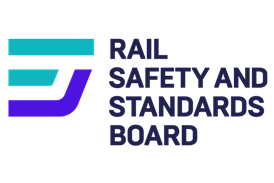INTRO: The XXVII th session of the International Railway Congress Association is being held in Marrakech on October 6-10, in conjunction with the International Union of Railways. Host railway ONCFM is no stranger to the main theme of the congress, with profitability achieved through restructuring
INTRO: XXVIIth IRCA-UIC Congress, Marrakech, October 6-10
BYLINE: Mohammed El Alj
General Manager, Office National des Chemins de Fer du Maroc
UNDER THE patronage of His Majesty King Hassan II, the XXVIIth IRCA-UIC congress hosted by ONCFM will explore the theme of ’The Rail Mode: from Economic Necessity to Financial Return’. This topic encompasses the wide range of initiatives taken around the world which have brought about fundamental changes to the organisational structure and management of railways. In many countries, railways are being set ever more demanding goals by their governments, being required to achieve profitability in an increasingly competitive environment.
Panels and workshops will discuss the three sub-themes of the congress: economic development and the environment, new management principles for infrastructure, and shareholders in the rail mode. These themes have been carefully selected to foster fruitful and thought-provoking dialogue between delegates from IRCA member railways, academic institutions, suppliers and other organisations, with the aim of promoting sustained and profitable development of the rail mode.
Given the topical nature of the subjects under discussion, high-level representation and the context of the worldwide rail renaissance, I am confident that the Marrakech congress will enjoy considerable success and have a lasting impact.
Restructuring brings results
IRCA’s host country for its first congress in North Africa has adopted a liberal free-market model for its future economic development, a revolution that has had important consequences for ONCFM. Through a programme of voluntary reform, we have endeavoured to adapt to a changing marketplace, whilst profiting from the latest developments in the fields of railway technology and management systems.
In November 1994 ONCFM signed an agreement with the government which paved the way for wholescale restructuring. This was designed to meet the twin goals of restoring the railway to financial health and rationalising its management structure. These reforms have undoubtedly enjoyed considerable success. After generating a substantial reduction in its deficit in 1995, ONCFM recorded its first ever surplus of 6·85m Dirhams in 1996, and provisional results for the current financial year suggest that this positive trend is continuing.
A contract-plan signed with the government in September 1996 defines the objectives ONCFM must meet between now and 2000. With the help of international lending agencies, a major infrastructure and rolling stock investment programme is to be undertaken. The principal projects are outlined in the box below. Work has already begun at a number of sites, and studies for other schemes have been finished or are nearing completion.
ONCFM has also adopted a fresh commercial strategy based on a decentralised, regional operating structure. This has enabled services to be more readily tailored to meet demand, and has led to the withdrawal of unprofitable stops and services, a reduction in transit times and the rationalisation of computerised freight rolling stock management. All this paved the way for ONCFM to reposition itself on the Moroccan transport market, boosting income and cutting operating costs.
After narrowly avoiding bankruptcy, ONCFM has taken its future in its own hands. We have made strenuous efforts to improve our finances, and rationalisation of the management structure is bringing down operating costs. Having placed its customers at the heart of its commercial strategy, the railway must strive to meet their requirements as best it can. o
Contract plan projects
o Complete renewal of 202 km of track;
o Gradient, curvature and other alignment improvements for higher speeds over 41 km;
o Catenary renewal over 200 km;
o Capacity improvements between Kénitra and Sidi Kacem (82 km);
o Signalling and telecommunications improvements;
o Acquisition of nine electric locomotives, 100 wagons and 500 containers.
CAPTION: Delegates at the Marrakech congress this month will have the opportunity to explore some of Morocco’s spectacular scenery




















